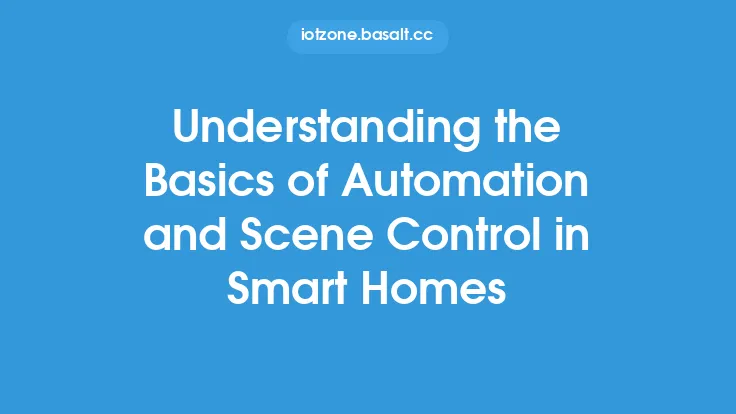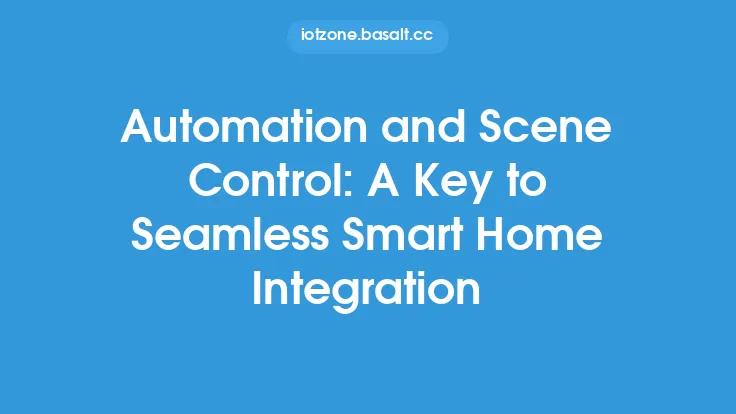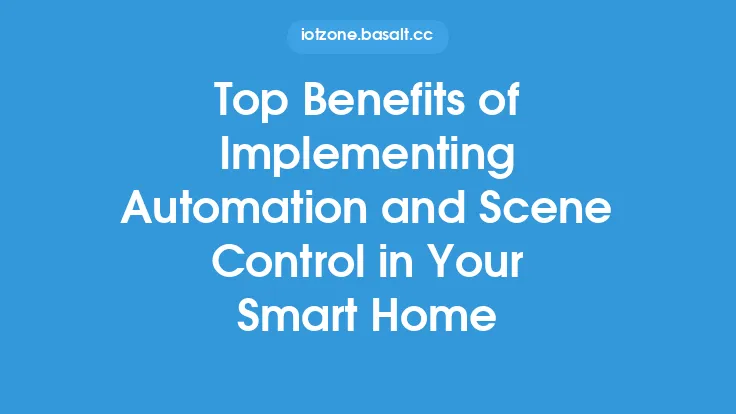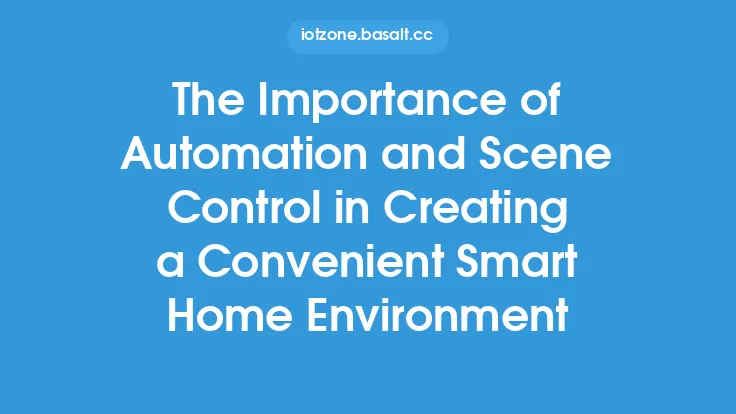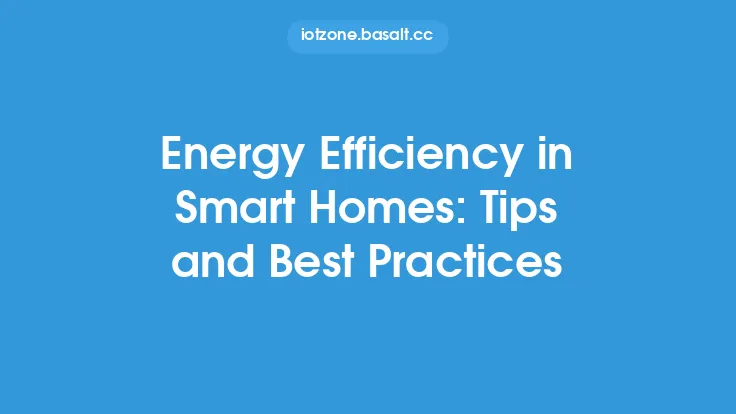When it comes to smart home automation, one of the most critical aspects is optimizing automation and scene control. This involves creating a seamless and integrated experience that allows homeowners to control and automate various devices and systems within their home. To achieve this, it's essential to follow best practices that ensure efficient, reliable, and user-friendly automation and scene control.
Introduction to Optimization
Optimizing automation and scene control in smart homes requires a thorough understanding of the underlying technology and infrastructure. This includes the type of devices and systems being used, the communication protocols employed, and the software or platform that integrates everything. Homeowners and installers must consider factors such as device compatibility, network bandwidth, and power consumption when designing and implementing automation and scene control systems.
Device Selection and Compatibility
One of the most critical aspects of optimizing automation and scene control is selecting devices that are compatible with each other and the overall system. This includes choosing devices that use the same communication protocol, such as Zigbee, Z-Wave, or Bluetooth, and ensuring that they are compatible with the central hub or controller. Homeowners and installers should also consider the device's power consumption, as this can impact the overall energy efficiency of the system.
Network Infrastructure and Bandwidth
A robust and reliable network infrastructure is essential for optimizing automation and scene control in smart homes. This includes ensuring that the network has sufficient bandwidth to support the number of devices and systems being used. Homeowners and installers should also consider the type of network topology being used, such as a mesh network or a star network, and ensure that it is optimized for low latency and high reliability.
Software and Platform Selection
The software or platform used to integrate and control automation and scene control systems is critical to optimizing their performance. Homeowners and installers should choose a platform that is user-friendly, scalable, and compatible with a wide range of devices and systems. The platform should also provide advanced features such as scene control, scheduling, and energy monitoring, as well as integration with popular voice assistants and other smart home devices.
Scene Control and Automation Rules
Scene control and automation rules are critical components of optimizing automation and scene control in smart homes. Homeowners and installers should create scenes that are tailored to specific activities or events, such as "good morning" or "movie night," and use automation rules to trigger these scenes based on specific conditions or events. The rules should be flexible and customizable, allowing homeowners to adjust them as needed to suit their lifestyle and preferences.
Energy Efficiency and Power Management
Optimizing automation and scene control in smart homes also involves energy efficiency and power management. Homeowners and installers should use devices and systems that are energy-efficient and have low power consumption, and implement automation rules that turn off devices and systems when not in use. The system should also provide energy monitoring and reporting, allowing homeowners to track their energy usage and make adjustments as needed.
Security and Access Control
Security and access control are critical aspects of optimizing automation and scene control in smart homes. Homeowners and installers should ensure that the system is secure and protected from unauthorized access, using features such as encryption, secure authentication, and access control lists. The system should also provide remote access and monitoring, allowing homeowners to control and monitor their smart home devices and systems from anywhere.
Maintenance and Troubleshooting
Finally, optimizing automation and scene control in smart homes requires regular maintenance and troubleshooting. Homeowners and installers should regularly update the system software and firmware, perform device checks and diagnostics, and troubleshoot issues as they arise. The system should also provide diagnostic tools and reporting, allowing homeowners to identify and resolve issues quickly and efficiently.
Advanced Optimization Techniques
For more advanced users, there are several techniques that can be used to further optimize automation and scene control in smart homes. These include using machine learning algorithms to predict and adapt to homeowner behavior, implementing advanced automation rules that use natural language processing and computer vision, and integrating with other smart home devices and systems, such as security cameras and door locks.
Conclusion
Optimizing automation and scene control in smart homes requires a thorough understanding of the underlying technology and infrastructure, as well as careful planning and implementation. By following best practices such as device selection and compatibility, network infrastructure and bandwidth, software and platform selection, scene control and automation rules, energy efficiency and power management, security and access control, and maintenance and troubleshooting, homeowners and installers can create a seamless and integrated smart home experience that is efficient, reliable, and user-friendly. Whether you're a homeowner looking to upgrade your smart home or an installer designing a new system, optimizing automation and scene control is critical to creating a convenient, comfortable, and connected living space.
